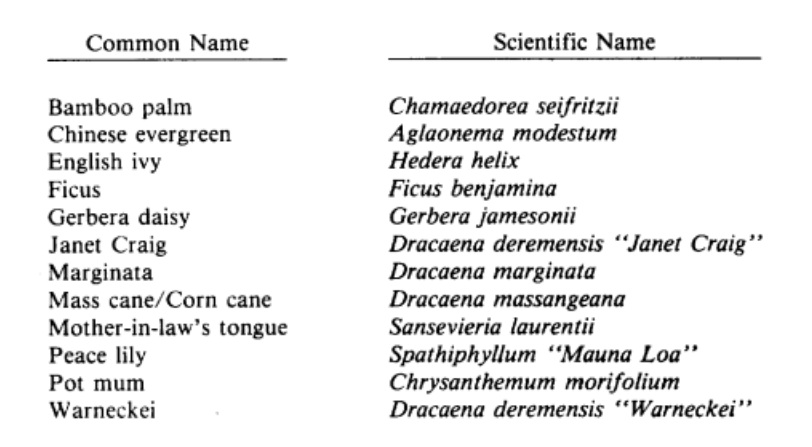Common Plant Myths: Air Purification
A common question that we get at niche is, “Does this plant purify air?”
We even have some people shy away from recommended plants because they are not plants popularly known to purify air. The interest in plant purification is majorly due to a study that NASA published in 1989. The study tested for air purification properties in common household plants at the time and their ability to filter three major pollutants: benzene, trichlorethylene, and formaldehyde. In the 1980s these were the some of the most popular plants:
Source: “Interior Landscape Plants for Indoor Air Pollution Abatement”, NASA, 1989
Any of the common names look familiar? Many of the plants that we hold dear today are popular not only because they are relatively easy to take care of, but because they did well in the study. The point of this piece is not to have everyone stop by the shop at once to buy a ficus benjamina and peace lily (but definitely stop by soon), but rather to highlight two things: first, that this study was published in 1989. Fortunately for us, access to house plants for the average consumer has largely expanded since then due to globalization. Second, science has advanced quite a bit since 1989. Altogether this study is very important, but at this point it’s outdated.
All plants have the ability to filter pollutants out of air, pollutants that were included in the study and others that were not. A general rule: more surface area = more filtration. A plant with very broad leaves or a high number of leaves has more total stomata (video) which facilitate carbon’s transformation into oxygen. In addition to leaf size, something else to consider is the number of plants you have. NASA also recommends that 15-18 plants between a 6”- 8” diameter is needed to truly purify a room or house of 1500 square feet. This means in order to filter air for 100 square feet, you need 2-3 plants. So please do not hesitate to purchase a beautiful calathea or bird of paradise. No matter what you buy, you will receive the benefits of a better air quality.

